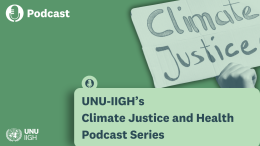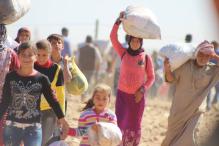The UN has increasingly become an organization focused on regional engagement. This trend is shown in the creation of new Regional Collaborative Platforms to advance the UN’s development agenda, new regional prevention strategies to address the risks of violent conflict, the expansion of Regional Prevention Offices in some regions to provide more fixed capacities for engagement, more consistent use of the Regional Monthly Review process in the Secretary-General’s office, and deepened partnerships with regional entities like the African Union, the League of Arab States, and others. Better understanding and responding to risks at the regional level was a key priority for the 2017 reform initiated by Secretary-General Guterres and is also a clear priority in the 2021 Our Common Agenda.
This emphasis on regional engagement is a response to the evolution of today’s risks, including the rise of transnational organized crime, globally-oriented violent extremist groups, large-scale population movements across borders, and the growing impacts of climate change.
Recognizing that the UN’s regional assets are uniquely placed to counter these risks, the UN has developed a wide range of approaches for working at the regional level. What is lacking, however, is cross-regional understanding of how these investments by the UN at the regional level support prevention in very different contexts. It is not yet clear how the UN’s regional approaches on humanitarian, development, and security tracks connect to each other, or indeed to national efforts.
Stress Testing the UN's Regional Prevention Approaches provides a working definition of “prevention” and a brief overview of the evolution of regional prevention structures in the UN, and examines three regions where the UN has developed distinct regional approaches: the Sahel, the Horn of Africa, and Latin America. Drawing from these cases, and from an expert roundtable consultation with the UN offices in the Great Lakes, Central Africa, Western Asia and Headquarters, this report offers cross-cutting lessons and recommendations for the UN’s regional approaches going forward.
The accompanying Models for Prevention: Lessons from the Sahel, Horn, and Latin America paper identifies three prevention models: (a) a ‘cascading model’ in the Sahel, where regional strategies are meant to shape national plans; (b) a ‘net model’ in the Horn, that aims not only to provide a platform for prevention actors to come together in a very broad and permeable configuration, but also encourages them to move in the direction of greater coherence; and (c) an ‘alliance model’ in Latin America built around coalitions that form on the basis of appeals between Resident Coordinators and regional actors for specific and specialist input and funding, taking into account locally-identified risks. This report argues that there could be broader application of all or parts of these models across other settings.
Research outputs:





